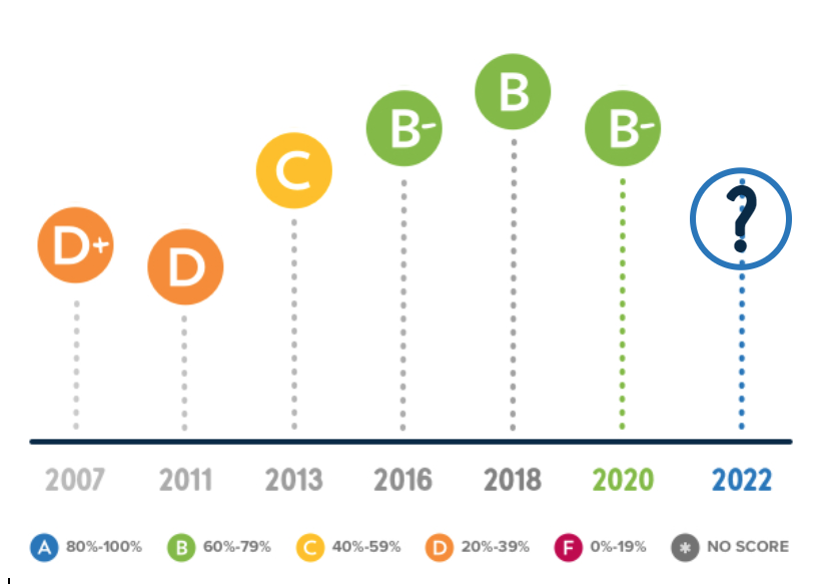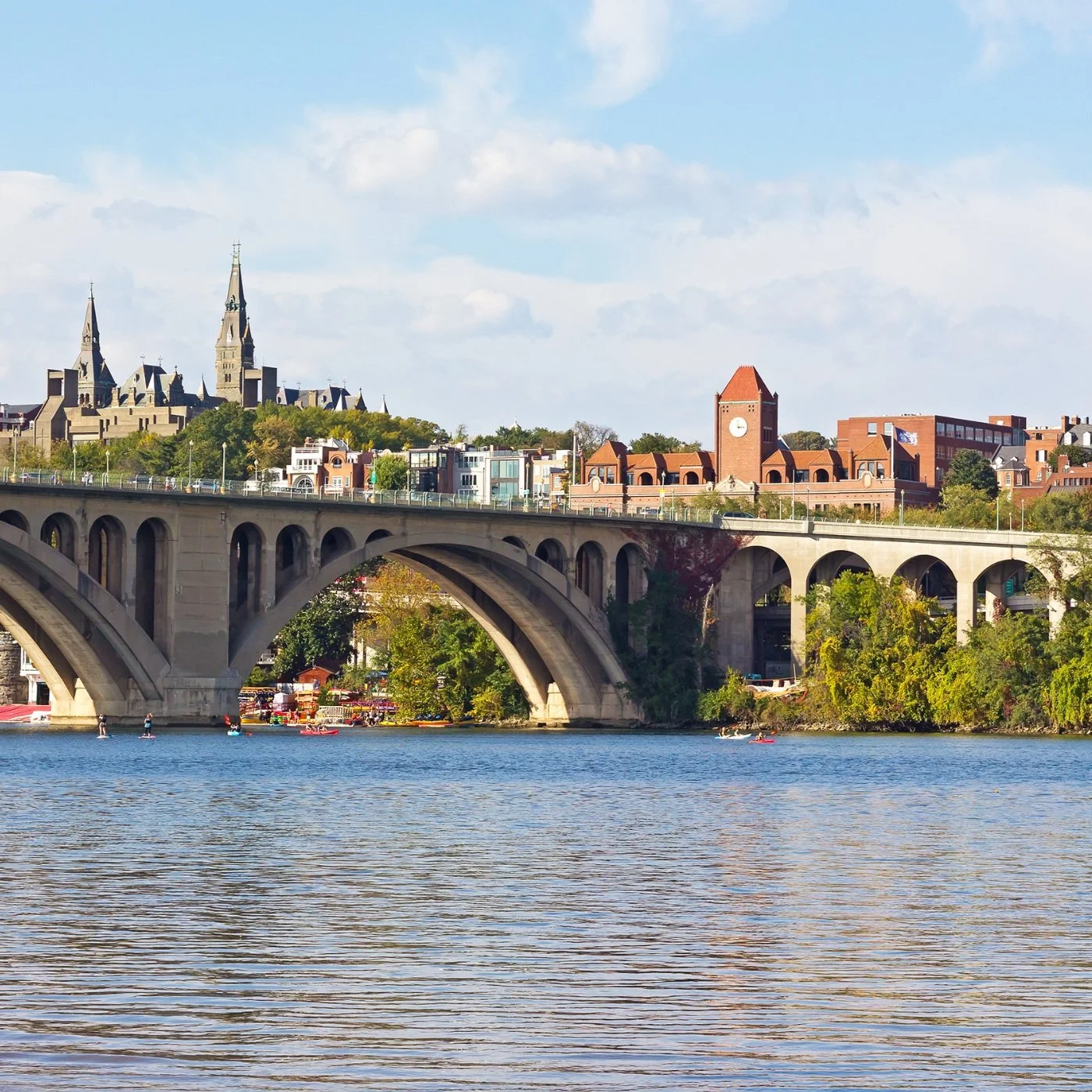New Potomac Report Card downgrades Potomac River’s health - see the new grade
/For the first time in a decade, the health of the “Nation’s River” has declined
For the first time in a decade, the Potomac River’s health grade has declined – slipping from a B to a B- in Potomac Conservancy’s 2020 Potomac River Report Card. It’s a far cry from when the Conservancy graded the river an abysmal D just ten years ago, but stalled progress could signal a dangerous reversal in course for the river’s health if bold measures are not taken to address threats.
WHY THE POTOMAC RIVER’S HEALTH MATTERS
Our community’s health depends on a thriving and clean Potomac River. What’s good for the Potomac is good for us. We all rely on the river for the water we drink, the food that’s grown on its lands, the restaurants and businesses along its shores, and the joys of exploring its streams, trails, and parks.
The COVID-19 public health crisis has shed further light on the importance of protecting natural spaces as people across the region flocked to the outdoors this spring and summer to unplug, relax, and recreate.
WHY DID THE GRADE GO DOWN?
Polluted runoff, rapid deforestation, and new attacks on water protections could derail progress, the report warns.
Polluted stormwater runoff from urban and suburban areas continues to climb and is the fastest growing source of pollution to the Potomac River. Agricultural pollution remains the single largest source of pollution to the Potomac, but improvements in agricultural land practices have supported its steady decline.
Rapid deforestation and sprawl are stripping the land’s ability to absorb rainwater as streets, parking lots, and rooftops replace natural ground cover. States in our region are failing to meet their tree restoration goals. Shoreline trees – called riparian buffers – received an F, the only failing grade among the 21 river health indicators Potomac Conservancy assessed.
Higher-than-average precipitation is making stormwater more difficult to manage. Extreme rainfall is particularly problematic as runoff flushes excess nutrients and sediment (from erosion) into local tributaries, degrading water quality and destroying fishing grounds. For example, there was a notable short-term increase in nutrient and sediment pollution levels in 2018, the same year our region’s experienced record-setting rainfall.
IS THERE ANYTHING GOING RIGHT?
Despite this recent setback, long-term water quality trends confirm the Potomac River is in recovery. Declining pollution, returning wildlife, and protected land are contributing to the river’s comeback.
Over the last 30 years, pollution levels in the river have declined significantly in large measure to the efficacy of the Clean Water Act of 1972, the federal-state Chesapeake Bay cleanup plan, and regional conservation efforts. Changes in agricultural practices, improvements to wastewater treatment plants, and a reduction in industrial pollutants have all contributed to improving water conditions.. Dedicated local fees that support the implementation of green infrastructure are an encouraging step by localities to mitigate the polluted runoff.
As part of the federally-mandated Clean Rivers Project, DC Water is undertaking a large-scale, multi-stage tunnel project to capture and treat stormwater to reduce Combined Sewer Overflows (CSOs) – incidents when sewer systems divert diluted sewage into local tributaries during or directly after heavy rainfalls. The construction of the Anacostia River tunnel was completed in 2016 to prevent 96 percent of CSOs in the area from occurring. The Potomac River tunnel is the next major phase of the project.
TOP TRENDS
The good news:
Nutrient pollution from industrial and agricultural sources continue their long-term decline
American shad, bald eagles, and other native wildlife are returning to local waters
More forest and farmland (over 3.5 million acres of total land) is being protected in the region
The river’s popularity is reaching new highs with greater access points and more people turning to the outdoors for physical and mental well-being during the COVID-19 public health crisis.
The bad news:
Urban polluted runoff continues to increase and is the fastest growing source of pollution in the river
Deluges eroded stream banks and increased sediment pollution
Lower tidal water clarity harmed underwater habitat
Juvenile fish rates for smallmouth bass plummeted
Invasive and predatory blue catfish are quickly invading local waters, threatening native fish
States within the watershed are failing to plant sufficient trees along vulnerable streams and creeks
WHAT CAN BE DONE TO GET THE RIVER BACK ON TRACK?
For the first time in generations, our community is close to enjoying a swimmable, fishable Potomac River – but we need to act now to make this vision a reality.
In this critical moment, we must prevent threats from destroying progress by passing stronger water protection laws and investing in natural defenses that will make our communities better prepared for our changing climate.
Help us defend clean water laws that:
INVEST in clean water and the environment as public health priorities
PROTECT healthy forests and the river’s cleanest tributaries
PLANT streamside trees to capture and filter polluted runoff
DEFEND AND STRENGTHEN laws that protect our waterways at the local, state, and federal levels
PLAN river-friendly communities that safeguard streams, forests, and drinking water sources
About the Report
Potomac Conservancy’s Potomac River Report Card presents and assesses data on five significant river health indicators: pollution, fish, habitat, land, and people. Using an established baseline and set of benchmarks, the Conservancy measures restoration progress and assigns the Potomac River a grade.
Data sets for some indicators takes time to become publicly available, so we have aggregated and assessed data through 2018. Using an established baseline and set of benchmarks, the Conservancy measures restoration progress and assigns the Potomac River a grade. The overall grade has been weighted to account for non-quantifiable, inaccessible, or outdated data on water quality threats. These threats include, but are not limited to, harmful algal blooms, warming waters, endocrine disrupting compounds, PCBs, aquatic diseases, and others.
FOR MORE INFORMATION visit potomacreportcard.org.
FOR MEDIA INQUIRIES contact Melissa Diemand at diemand@potomac.org.




















